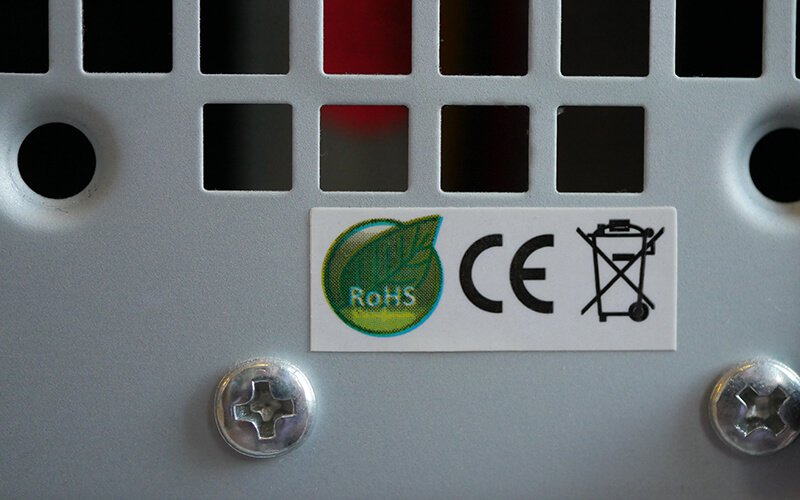
OEHHA Tries Again
A year and a half ago the California Office of Environmental Health Hazard Assessment (OEHHA) tried to revise the requirements for the Proposition 65-related Short-Form warning but failed to accomplish it within the timeframe required by California’s Administrative Procedures Act (APA), even though the time allowed had been extended due to the COVID-19 pandemic. OEHHA is going to try again.
On October 27, OEHHA sent an email to its mailing list with the subject “Proposition 65 - Notice of Proposed Rulemaking and Announcement of Public Hearing: Amendments to Article 6, Clear and Reasonable Warnings Safe Harbor Methods and Content,” kicking off the process of revising the regulatory requirements. They say “the proposal intends to make the Proposition 65 short-form safe harbor warning more informative for consumers by
- requiring identification of a specific chemical exposure for which the warning is being given
- to provide clarity for businesses regarding other aspects of short-form warnings and safe harbor warning requirements for products sold on the internet and in catalogs, and
- to provide new tailored safe harbor warnings for passenger or off-highway motor vehicle parts and recreational marine vessel parts.”
The warning does make some changes to the required text of the warning label, allowing manufacturers to use the words “CA WARNING” or “CALIFORNIA WARNING” in all capital letters and bold print, instead of the current word “WARNING.” Presumably this will help consumers understand that this applies only in California.
It also expands the warning text to include the name of at least one chemical substance. They expect that this will have the effect of reducing prophylactic use of the warning. For instance, the text for lead (Pb) will be
CA WARNING: Risk of cancer and reproductive harm from exposure to lead. See www.P65Warnings.ca.gov.
That’s still somewhat shorter than the standard text, which would be
WARNING: This product can expose you to lead, which is known to the State of California to cause cancer and birth defects or other reproductive harm. For more information go to www.P65Warnings.ca.gov.
Internet sales will also require a more explicit and visible warning or hyperlink to the warning on the product display page or “an otherwise prominently displayed warning made to the purchaser prior to completing the purchase.” It also makes clear that this alone is not adequate; the product itself must include the warning.
You can find the text of the proposed amendment here. The public comment period extends through December 20, with a public hearing on December 13.
An EU RoHS Update
A mere six months ago I wondered when the recast of the RoHS Directive would happen. And now we have received an answer, which is “not yet”.
On December 7 the European Commission finally released its report on the review of the RoHS Directive. And the bottom line is that, for the time being there will be no recast, but there may well be an amendment to RoHS in the interim to address certain current issues.
In some ways this is understandable; in others it’s going to result in an even murkier picture.
The report goes into detail on some of the challenges of, and possible solutions to, the exemption application and, especially, renewal processes as they are today. It admits that
“…in exempted applications there is less potential to further reduce the presence of certain hazardous substances compared to when a restriction was newly introduced. This implies that the benefit of narrowing the scope of an exemption, in terms of amount of substances avoided, is in general smaller than was initially the case.”
This is combined with the increasingly complex challenge “to thoroughly assess the technical information provided.”
So, again, leaving exemptions as they are rather than continuing to force a rapidly diminishing return on investment by further narrowing and bifurcating current exemptions, as proposed by some of the consultant reports, such as Pack 22, makes complete sense. They should focus on where they may get a “bigger bang for the buck” by working to identify additional substances to add to the Annex II list of restricted substances. But whether this will be their approach moving forward is unclear.
Other notable observations include the finding “that the validity periods for time-limited exemptions and transition periods in case of expiry are too short for EEE, which requires long development, testing and validation time (e.g. for certain medical devices).” Between the 5-to-7-year exemption validity time limit, the 12-to-18-month transition period for expired exemptions and the often lengthy duration of the exemption process (they note that “the related decision making takes more than 24 months and more than 60 exemption requests are pending (status December 2022)”), they agree that this process is in need of change.
The review proposes to hand off the responsibility for technical aspects of substance restriction- and exemption-related assessments off to the European Chemicals Agency (ECHA), which was created to support REACH and other product-focused regulations (e.g., biocides and POPs), rather than keep it under the direct control of the European Commission. Among other things, they note that “[t]his would improve consistency with other chemicals legislation, and thus help meet one of the requirements under the RoHS Directive, namely to be ‘coherent with other legislation related to chemicals, in particular Regulation (EC) N° 1907/2006’,” which is REACH. The Commission would retain decision-making responsibility.
Therefore, the Commission has just proposed a Directive that amends RoHS “as regards the re-attribution of scientific and technical tasks to the European Chemicals Agency.” The stakeholder consultation on this is open now, through February 6, 2024.
They note that the 2012-vintage FAQ is in dire need of updating. This had been noted as an issue by the April, 2021 consultants’ RoHS assessment report.
So rather than “recast” or significantly revise the current RoHS Directive, the Commission is taking—or expecting to take—the rather tepid step to, instead, apply somewhat temporary bandages to correct some of the significant issues that the Directive has today. They want to wait until the general regulatory picture related to the European Green Deal clarifies: “the possible future revision of the [RoHS] Directive should consider the legislation’s long-term perspective and its position within waste, products, environmental and chemicals legislation.”
Along with this review, the Commission has provided us with an 86-page Commission Staff Working Document that contains a lot of useful and interesting information, including some of their thinking behind these decisions. Expect another proposal and attendant stakeholder consultation from the RoHS Policy Officer in the not-too-distant future that covers some of the observations in these documents. We don’t have adequate clarity today, but the Commission seems to be aware of the bigger issues.
Visit DCA at www.DesignChainAssociates.com or email the author with any questions or comments on this post.
Statements of fact and opinions expressed in posts by contributors are the responsibility of the authors alone and do not imply an opinion of the officers or the representatives of TTI, Inc. or the TTI Family of Companies.
Follow TTI, Inc. on LinkedIn for more news and market insights.
Statements of fact and opinions expressed in posts by contributors are the responsibility of the authors alone and do not imply an opinion of the officers or the representatives of TTI, Inc. or the TTI Family of Specialists.
Follow TTI, Inc. - Europe on LinkedIn for more news and market insights.
Statements of fact and opinions expressed in posts by contributors are the responsibility of the authors alone and do not imply an opinion of the officers or the representatives of TTI, Inc. or the TTI Family of Specialists.

